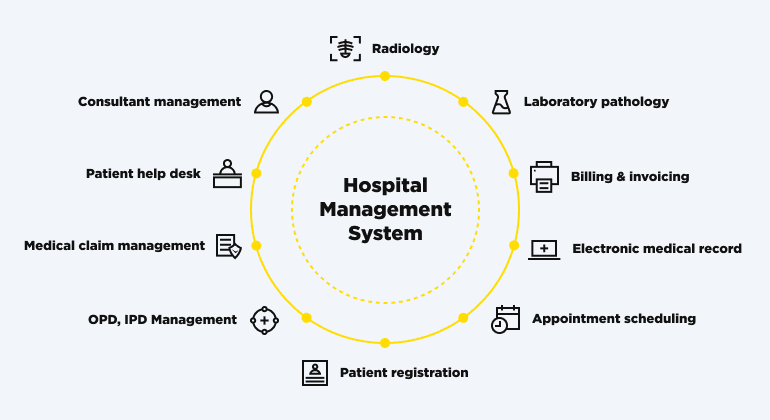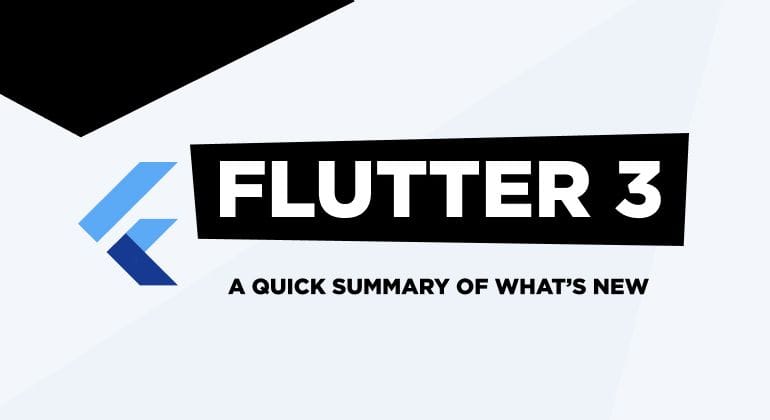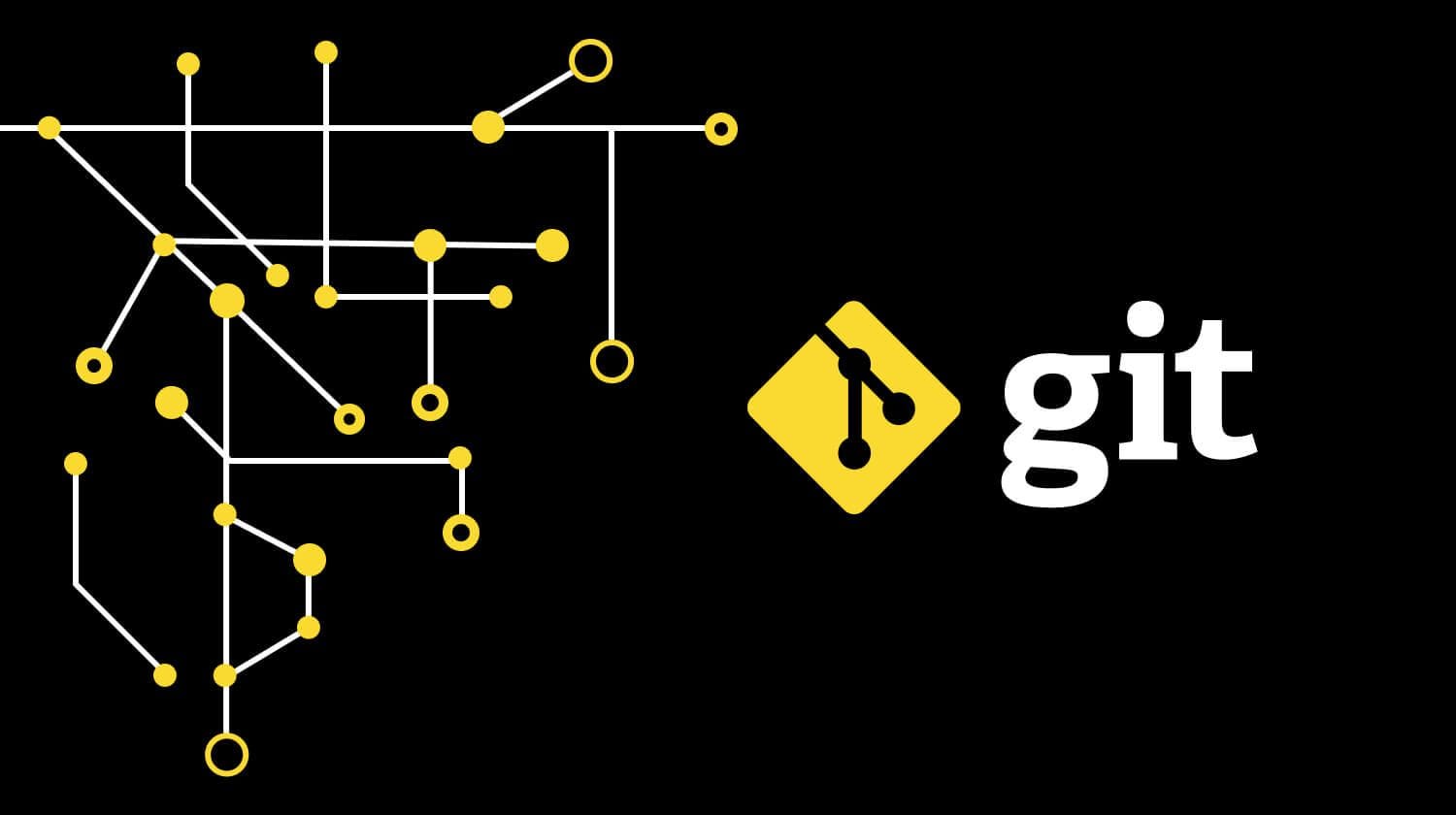Patient Engagement Software: The Ultimate Guide
Medical organizations, healthcare systems, and hospitals can profit greatly from patient engagement software. This solution provides a multitude of advantages to patients as well as healthcare providers. Without digital tools, it is becoming more and more complicated to keep patients involved and increase satisfaction. The reason lies in the fact that healthcare grows more fragmented, and patients bear a greater financial responsibility for their care.
Unfortunately, healthcare providers have been slow to adopt communication technology. However, according to an Accenture Survey, 60% of patients prefer to use technology for patient-provider communication. That is why patient engagement systems can assist healthcare organizations in bridging the gap with solutions that expand their reach and deliver a top-notch patient experience.
How Do You Define Patient Engagement Software?
Simply put, patient engagement platforms are a technological tool that streamlines and boosts patient communications and facilitates patients' simple access to their clinicians when needed.
In the past, the majority of the first-generation patient engagement solutions were restricted to one-way push patient communication and concentrated largely only on automated appointment reminders. Nevertheless, this patient engagement technology has gone through a lot of development and improvement. So, nowadays, it even allows patients to respond to reminders and is now frequently referred to as a patient engagement platform.
For increased visibility and productivity for medical office staff, best practice patient engagement platforms also include patient reaction data back into the scheduling or EHR software. It is important to note that the global patient engagement platforms market is expected to grow at a 17% CAGR during the forecast period (2022-2032), reaching nearly US$ 93.4 Billion by 2032 (it is a significant shift considering it used to be about US$ 16.6 Billion in 2021).
The Most Common Types of Patient Engagement Software
When such an advanced technology is applied, it is easier for patients and the healthcare system to interact. Patient portals, smartphone apps, wearables, telemedicine platforms, remote monitoring tools, health management platforms, and telehealth platforms are just a few of the tools and applications that it includes. With the use of these technologies, patients can keep track of their health metrics, make appointments, interact with healthcare professionals, view their medical records, and actively engage in collaborative decision-making. Moreover, 93 percent of patients expect healthcare organizations to use digital tools when interacting with them.
Patient engagement platform comes in a variety of forms, each with a unique active role and area of influence. Let’s discover the most common types of them.
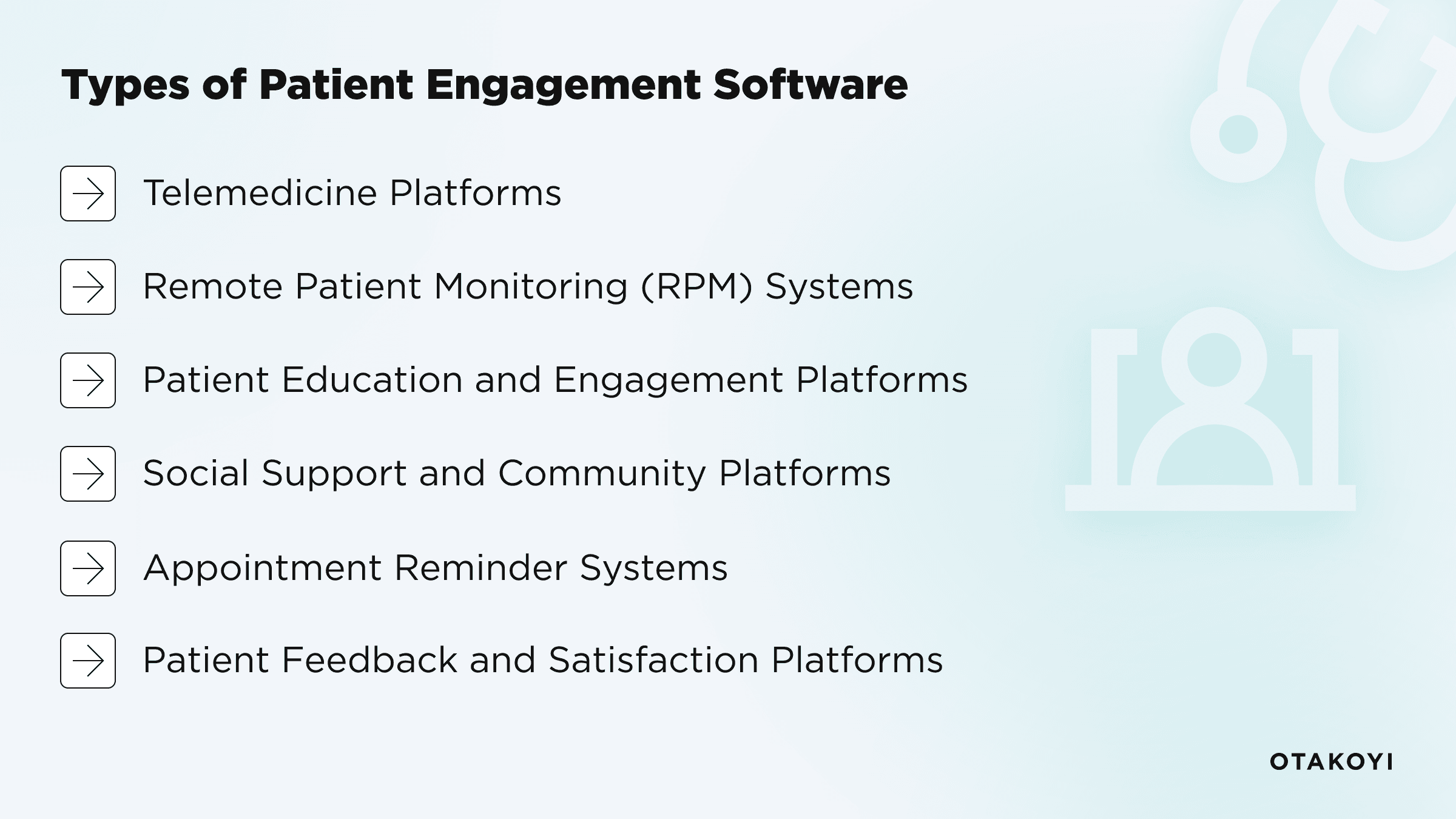
1. Telemedicine Platforms
This software for telemedicine makes distant medical services and virtual consultations possible. From the comfort of their homes, patients can use these platforms to consult with healthcare professionals via video or audio, ask questions, get diagnoses, and explore treatment options. We regard it as a great solution to simplify healthcare services in general.
2. Remote Patient Monitoring (RPM) Systems
RPM systems are used to send data to healthcare providers and remotely monitor patients' health conditions. They frequently interface with sensors, wearable technology, or other monitoring instruments. The latter ones are aimed at monitoring medication adherence, chronic disease parameters, or any other vital signs. Medical experts can examine the gathered information and promptly intervene or modify treatment for their patients.
3. Patient Education and Engagement Platforms
The primary objective of these software solutions is to provide patients with instructional information and engagement tools. They might offer interactive teaching materials, decision support tools, individualized health information, and instruments for monitoring and maintaining health objectives. The important statistics to mention here is that 92% of patients feel more connected to the healthcare provider and even tend to take better care of themselves thanks to the digital patient education they receive.
4. Social Support and Community Platforms
Through these platforms, patients can interact with others who share their health issues or experiences by creating online communities or social networks. These groups provide a forum for knowledge exchange, emotional health, and peer support. An example of such a solution is a Social Care Assistant app developed by our Otakoyi team. This mobile app is aimed at enhancing the quality of care and life for seniors and people with disabilities on the one hand and organizing the activities of social sphere workers on the other hand.
5. Appointment Reminder Systems
These systems use phone calls, emails, or text messages to automatically remind patients of their future appointments. Better appointment adherence and a decrease in no-show rates result in improved healthcare results. We can’t help stating that 75% of patients want to receive appointment reminders via a mobile device.
6. Patient Feedback and Satisfaction Platforms
These platforms gather patient input regarding their experiences receiving healthcare, including suggestions for future improvements, areas for advancement, and degrees of satisfaction. These patient satisfaction scores can be used by healthcare practitioners to pinpoint problem areas and raise the standard of service.
Exploring the Benefits of Patient Engagement Platform
The benefits of patient engagement software are widely recognized in healthcare environments, encompassing different scales and configurations. Patient engagement systems are valuable to small medical practices because they make them competitive in the market and provide a long-term complement to their office staff. Large healthcare organizations, such as hospitals and health systems, find that patient engagement platforms provide significant cost savings and even additional revenue. We should also acknowledge that it is hardly possible to replicate the ease of patient communication that patient engagement software offers without automation and digital tools.
So, let’s find out the most crucial benefits a patient engagement platform can bring about.
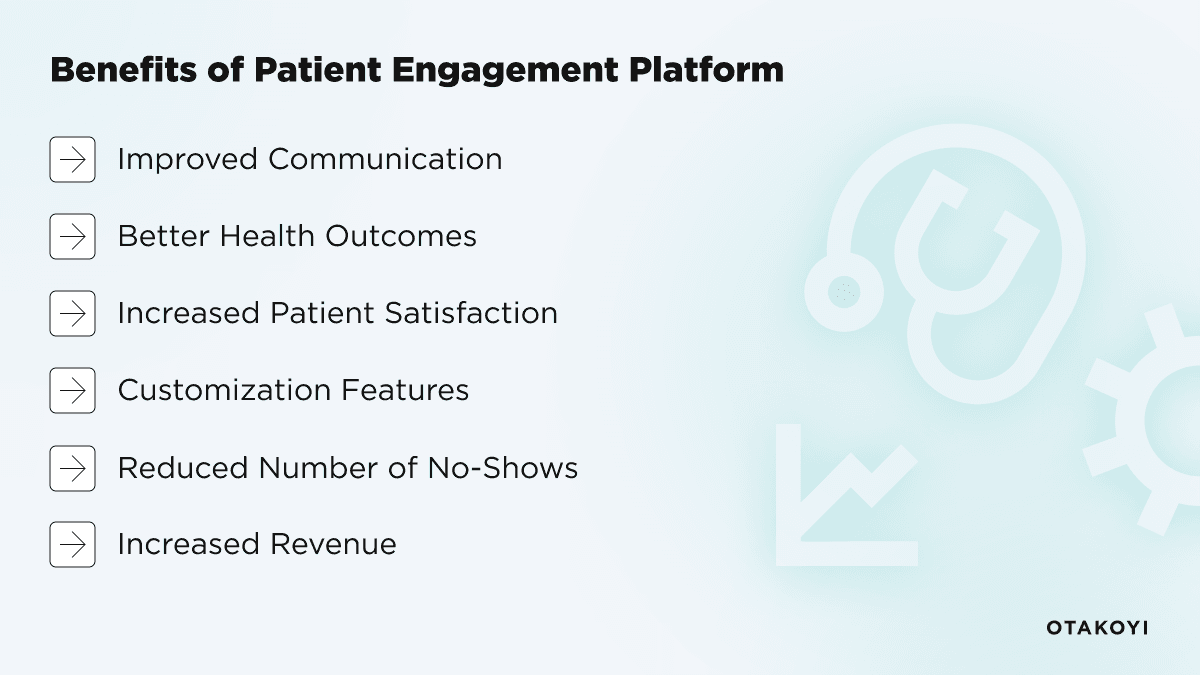
1. Improved Communication
The enhanced communication that patient engagement platforms enable is one of their main advantages. These platforms give patients and healthcare professionals an easy and safe way to communicate.
Patients feel heard and understood because of the ease of communication. Through these channels, healthcare providers can exchange crucial information, issue updates, and even provide guidance.
On the other hand, patients have the ability to send inquiries, complaints, and suggestions. Better patient-provider relationships result from this two-way communication, which improves healthcare administration.
2. Better Health Outcomes
Patient engagement platforms are also important for enhancing health and treatment results. Patients who actively participate in their care are more likely to stick to well-designed treatment regimens.
These systems give patients the right educational resources and healthcare tools. They can successfully control their health using them. Such solutions include tools for tracking health, prescription reminders, and access to health records. Patients can keep an eye on their health, adhere to their treatment regimens, and make knowledgeable decisions thanks to these functions.
Some research has indicated that increased patient involvement results in enhanced quality of life, reduced readmissions to hospitals, and better management of chronic illnesses.
3. Increased Patient Satisfaction
The establishment of these platforms has a major impact on raising patient satisfaction. They provide patients with control over their healthcare, which promotes a sense of empowerment and ownership.
The accessibility and ease of use provided by patient engagement platforms are valued by patients. They appreciate having their health records readily available, being able to make contact with medical professionals, and making appointment arrangements, all at their convenience.
4. Customization Features
Patients value the independence and openness these platforms offer. These platforms also provide individualized healthcare experiences. They enable medical professionals to customize their care to meet the unique requirements and preferences of every patient. Patient loyalty and happiness are increased through this customization.
5. Reduced Number of No-Shows
Thanks to the appointment reminder feature, patient engagement platforms help medical facilities minimize the number of patients who don’t show up to their appointments.
Using the best practices for schedules and communication modalities, patient engagement software makes sure that patients are alerted of their medical appointments and gives them the option to confirm, cancel, or reschedule their appointments.
6. Increased Revenue
Patient engagement solution aims to interact with patients at many points along the patient healthcare journey. It helps to maintain patient schedules, improve a practice's online presence, attract new engaged patients for follow-up and preventive care, and fill provider schedules.
In addition to keeping appointments from being lost, this increases revenue for medical offices and healthcare institutions by filling in new patient appointments. Digital billing solutions, which can improve patient payment convenience, lower bad debt, and write-offs, and boost provider revenue, are frequently included with patient interaction software.
What are the Key Features of the Patient Engagement Platform?
Patient engagement platforms have many features. These platforms are intended to let people have easier access to and management of their healthcare, including secure messaging, medication reminders, appointment scheduling, and health record access.
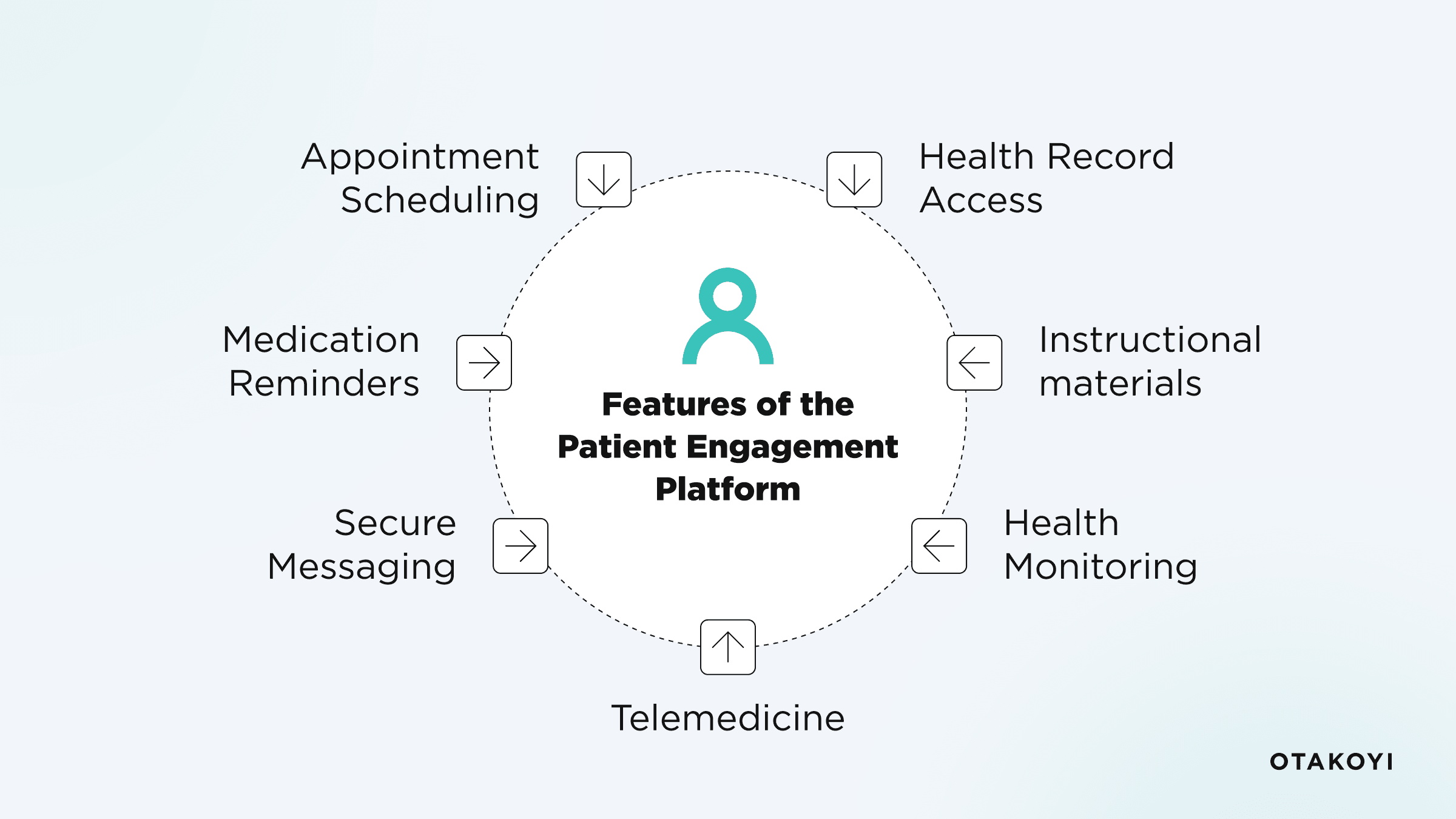
1. Appointment Scheduling
Appointment scheduling is one of the main functions of patient engagement platforms. Patients can use this option to schedule, postpone, or cancel appointments whenever it's most convenient for them.
Patients are no longer required to wait on hold or make calls during business hours. They can handle their appointments from anywhere at any time with only a few clicks.
This tool makes scheduling easier for healthcare practitioners. Staff members can concentrate on patient care since fewer administrative duties are required. Since patients receive automatic reminders for their appointments, it also lowers the number of no-shows.
2. Medication Reminders
Adherence to medication is essential for successful treatment. However, a lot of people have trouble remembering to take their prescriptions on schedule. Medication reminders can help in this situation.
Patients are guaranteed not to miss a dose thanks to this feature, which automatically sends reminders. Medication reminders give medical professionals a tool to keep an eye on patients' adherence.
3. Secure Messaging
In the healthcare industry, communication is essential. Patients and healthcare providers can communicate securely and in compliance with HIPAA regulations through secure messaging. Patients can seek guidance, speak up about their concerns, and ask questions.
Healthcare professionals can respond promptly, communicate updates, or give advice. A secure messaging system improves the patient-provider dynamic.
4. Health Record Access
Another crucial component of patient interaction platforms is access to medical records. Patients can access their health records from anywhere at any time thanks to this function.
They have the ability to monitor their health status, examine test findings, and share their records with other medical professionals. This feature makes it possible for medical professionals to maintain current patient records, all in real-time. They can also keep an eye on how their patient’s health is improving and make their decisions solely based on this data.
5. Additional Features
Patient engagement platforms provide other features in addition to these essential ones. They may include:
- telemedicine features,
- instructional materials,
- health monitoring tools.
We should emphasize that by meeting the many requirements and preferences of patients, these features impact the overall individual patient experience in a positive way. They also improve the effectiveness and efficiency of healthcare management by optimizing it.
We must remember that these characteristics will change as technology advances. More functionality, increased integration, and increased customization are to be expected.

Develop Patient Engagement Software With OTAKOYI
Contact usWhich Technologies are Involved in the Development of a Patient Engagement Platform?
The process of creating patient engagement platforms is difficult. The main technology stack includes data analytics, mobile apps, and cloud computing.
Together, these technologies produce a smooth and effective patient interaction process. Let's explore the ways in which these technologies assist in the creation of patient engagement platforms.
1. Cloud Computing
These platforms are developed in part thanks to cloud computing. The infrastructure required to host and administer these platforms is provided precisely by this technology.
Patient engagement platforms are accessible from anywhere at any time because of cloud computing as well. Patients' convenience in receiving treatment is greatly enhanced by this accessibility.
Cloud computing also provides scalability. The platform can easily scale up to accommodate the growing user database. Because of its scalability, the platform can expand without compromising its effectiveness or responsiveness.
Cloud computing has strong security protocols as well. Sensitive patient information must be safeguarded. That is why developers implement advanced security features like access controls and encryption, provided by cloud computing.
2. Mobile Applications
Another important piece of technology in the creation of patient engagement platforms is mobile applications. Patients can interact with the platform through an easy-to-use interface that these applications offer.
They put functions at the patient's fingertips, including medication reminders, appointment scheduling, secure communications, and access to health records.
Push notifications are another benefit of mobile applications. All the important reminders can be sent via them (crucial updates, appointments, and prescriptions).
3. Data Analytics
Another useful technology for the platforms is data analytics. Healthcare professionals can now evaluate patient data and get insights thanks to this technology.
This information can be applied to increase patient satisfaction, optimize patient outcomes, and personalize healthcare services.
Moreover, data analytics help track patient interaction. This way, healthcare professionals can monitor how their patients interact with the platform, spot different patterns, and implement changes.
4. Additional Technologies
In addition to data analytics, cloud computing, and mobile apps, additional technologies help in the development process of patient engagement solutions. These could include:
- blockchain technology,
- machine learning,
- artificial intelligence,
- and more.
This additional tech stack helps to provide automated processes, safe data sharing, and predictive analytics.
Wrapping up, the development of patient engagement platforms requires combining a number of different technologies. However, when used together, these technologies produce a smooth and effective process.
Platforms for patient engagement will advance along with technology. More functionality, increased integration, and increased customization - these are just a few examples of what we can mention that you can expect in the near future.
Navigating Compliance Requirements for Patient Engagement Platforms
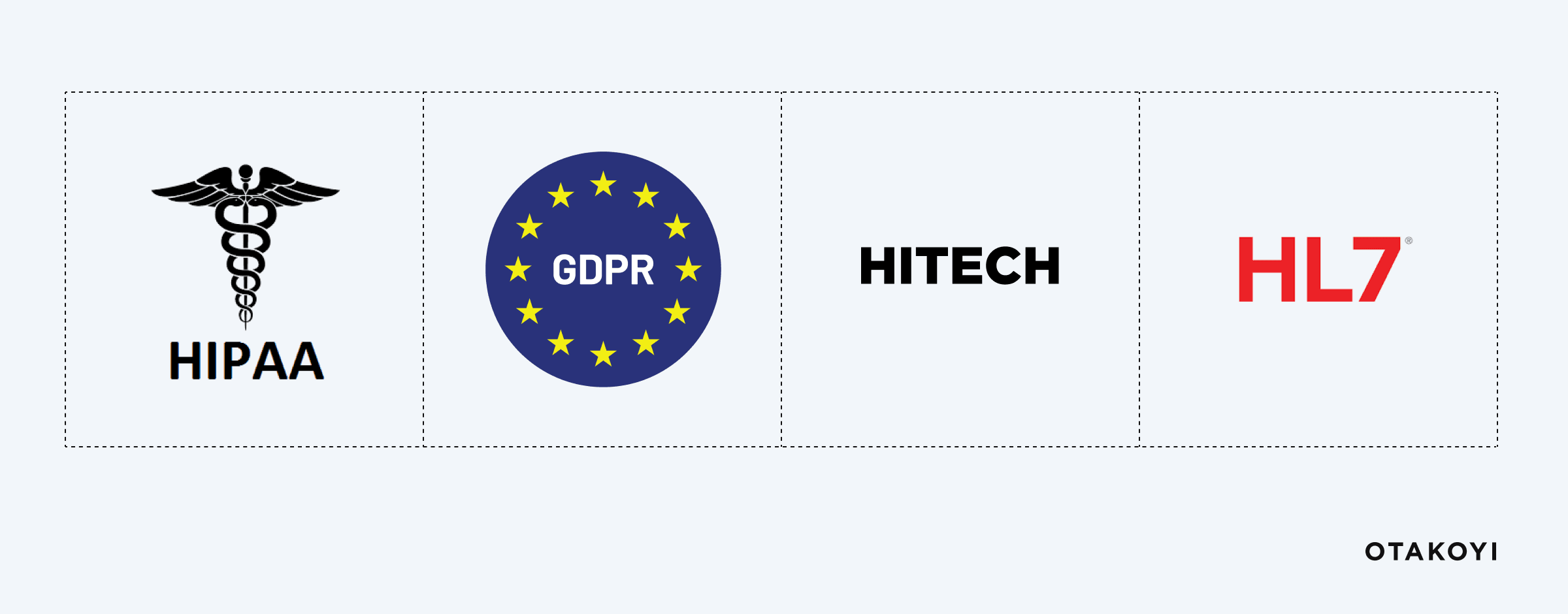
The essential thing to remember is that there are certain regulations and standards that must be complied with and followed. That is why it is so important to choose the right development company. However, let us first provide you with the main regulations to adhere to.
HIPAA Compliance
One important law in the US is called HIPAA. It establishes guidelines for storing and safeguarding private and sensitive patient information. Any organization that has something to do with secure and sensitive health information needs to be sure that everything is in place - the required network, correct procedures, and physical security.
Patient engagement solutions must comply with HIPAA. The date must have the highest security measures possible. It includes protecting processes like secure data transfer, access controls, and data encryption.
GDPR Compliance
Another important standard that every EU citizen must abide by is GDPR. According to this one, medical institutions that work with sensitive data must guarantee data protection, have permission to process data, and offer data portability.
The right to be forgotten, which gives people the option to have their data deleted, must also be implemented due to GDPR.
How to Choose the Right Patient Engagement Software Development Company?
It's critical to select the best healthcare software development partner for your patient engagement software to bring as many benefits for patients and providers as possible. That is why we have prepared a few things to consider when choosing your developer.
- Experience and Competence in Medical Technology
Seek a company that has a track record of success. This demonstrates the experience and knowledge of the healthcare business. You can examine case studies, portfolios, and client reviews.
- Knowledge of Health Regulations (Compliance Standards)
It's essential to have a thorough awareness of healthcare laws. The business needs to be aware of laws like GDPR, HIPAA, and others. Make sure the company you are selecting understands how to create a platform that abides by these rules.
- Dedicated Customer Support
Make sure to partner up with a dedicated customer service company. They should offer only top-notch client service. You may identify that by whether they are dependable, friendly, and quick to respond.
- Customization Abilities
Every healthcare facility has different requirements. Therefore, the development company should provide customization capabilities. Check out whether they have experience in modifying the platform to suit your particular requirements.
There are no words that we can use to express how important it is to select the best software development agency. Seek out a business that has a strong history in healthcare technology, a thorough grasp of healthcare laws, and a dedication to providing excellent customer service.
This way, you can guarantee a healthier future for your patients, generate better patient interaction rates, improve healthcare services, and enjoy all the benefits of patient engagement software.
Final Words
Concluding the ultimate guide on patient engagement software, we would like to state that it is already revolutionizing the healthcare sector. It increases patient engagement, boosts the effectiveness of healthcare services, and improves health outcomes. Patient engagement platforms will be crucial in transforming healthcare in the future as it keeps changing and advancing.


